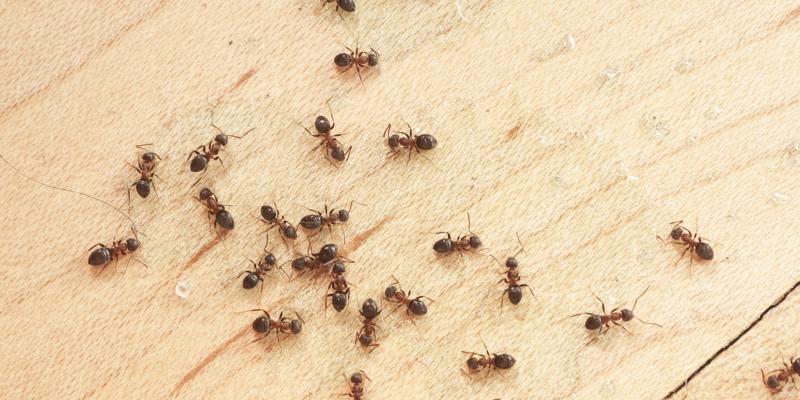
There’s so many things to love about living in the Pacific Northwest; our scenic mountains, forests and coastlines, mild climate, and rich cultural scenes. Unfortunately, our lush forests and mild, rainy climate mean we also have to deal with all kinds of creepy crawlies year-round, including ants. Ants are one of the most common nuisance pests here in Washington and Oregon. They can cause damage to your house and contaminate food, so let’s do a deep dive into the common kinds of ants you can come across and some helpful ant prevention best practices.
When is ant season in Washington and Oregon?
Ants can be active year-round in the Pacific Northwest, but activity typically peaks from late spring to early summer, especially from April to June. This is when many ant species emerge from dormancy in the colder months and start to forage for food and establish new colonies.
How Do You Prevent Ants?
Keep reading to learn about prevention tips for different ant species, but here are some general best practices for preventing ants. Remember, ants are attracted to food and moisture, so the more you can cut off access to those two things, the less likely you are to find ants in your home!
• Be mindful of sources of moisture in your home. Fix leaks, use a dehumidifier, and improve ventilation if your home tends to get humid.
• Check around the exterior of your house for any entry points, especially around windows, doors, utility lines, or cracks in the foundation.
• Keep your kitchen clean by wiping down counters, sweeping/mopping floors, and cleaning up food spills or crumbs.
• Trim vegetation around your home to prevent access for ants and keep your yard tidy by removing leaf piles or lawn clippings so they don’t find areas to nest.
Are Ants Dangerous?
The majority of the common ants here in Washington and Oregon are not considered dangerous to humans. One exception is the fire ant. If their nest is disturbed, they can be aggressive and leave painful stings. Illnesses and even deaths have occurred from allergic reactions to their venom. Thatching Ants can also be aggressive if their mound is messed with, but their bites typically only cause mild irritation. Carpenter ants can cause damage to wood in buildings, but they’re not aggressive toward humans. Now, let’s dive into some more information about household ants.
Carpenter Ants
Carpenter Ants are known for their ability to cause structural damage to buildings. They are sometimes confused with termites because they tunnel through wood, but they only chew through wood, not eat it like termites. They’re one of the largest ant species found in Washington and Oregon, around 1/4th to 1/2 inch long. They are typically a combination of black, red, and orange and have a segmented body with a narrow waist and elbowed antennae.
Swarming (mating) season occurs from late spring to early summer (April to June). Reproductive carpenter ants will grow wings and you might see them flying around in search of a mate and to set up new colonies.
Carpenter ants are highly attracted to damaged wood, and like to nest in logs, stumps, tree trunks, firewood, decks and porches, window and door frames, wall voids, and foam insulation. They’re also attracted to water and sugary food, so make sure to fix any leaks or moisture issues, and clean up spills.

Fire Ants
Fire ants (specifically, the European fire ant) are another dangerous ant species here in the Pacific Northwest. They are very small, about 3/16 inch long, and reddish-brown in color. European fire ants prefer to build their nests in cool, moist, and shaded areas, often along tree roots, under rocks, and in wood, leaf litter, and other outdoor debris. The nests can be small and hard to see, often hidden under debris, so be careful as you’re cleaning up around the yard. Fire ants can be active year-round, with activity peeking in the warmer months, and swarming happening in the late spring to early summer.
They can be aggressive and leave painful stings, so if you come across a nest, call a pest control professional to handle it right away. Regularly inspect your property for signs of nests in moist and shaded areas and remove stones, boards, fallen leaves, logs, and other debris to deter fire ants from taking up residence.
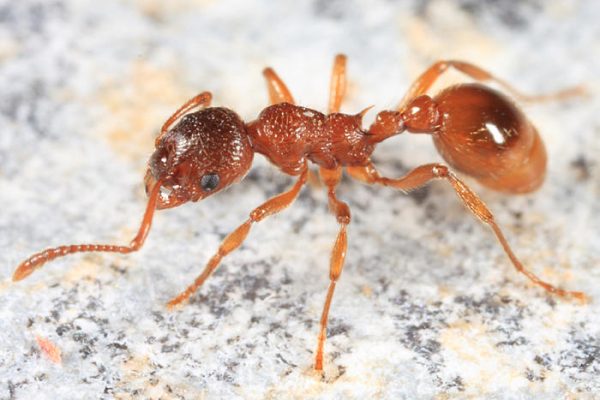
Little Black Ants
Little black ants… Well, the name says it all! They’re little, about 1/32 to 1/16 inch, jet black, and shiny. They are active year-round with swarming season from June to August, and they also have winged swarmers. They are nocturnal and prefer moist areas. Outdoors, they can be found around mulch, rotting logs, or other lawn debris, or nesting in soil, and sometimes make small ant hills. Indoors, they like to nest in wall voids, cabinets, behind foundations, bricks, stone or woodwork, and under floorboards or carpeting.
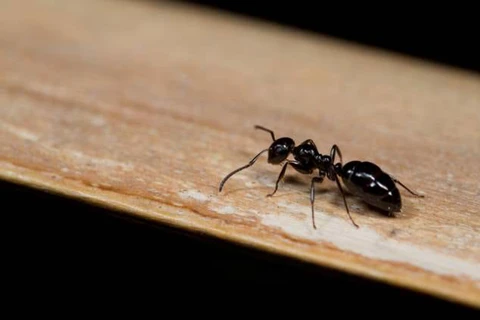
Odorous House Ants/Sugar Ants
Odorous House Ants can also be called sugar ants due to their love of sweets. Why are they called odorous? When crushed, they emit a rotten coconut, petroleum, or blue cheese-like smell. Gross. They’re small, about 1/16th to 1/8th inch long, and dark brown to black in color. Outdoors they nest in moist environments similar to the little black ants, indoors they’ll hide in wall voids, under floors, in insulation, and near sources of moisture such as kitchens, bathrooms, and laundry rooms. They swarm from April to June, so keep an eye out for them flying around. Since they’re attracted to sweets, make sure to clean up any sugary spills or food debris to prevent them from coming inside.
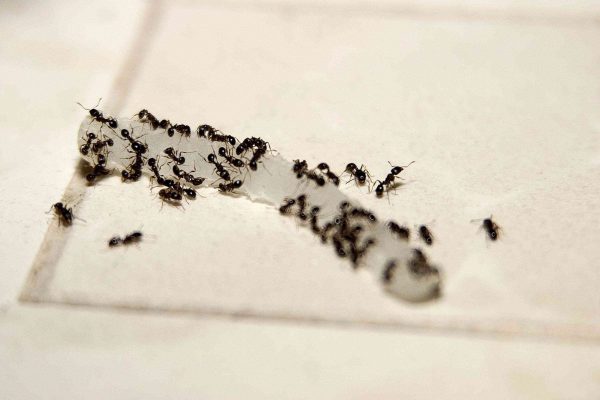
Thatching ants
Thatching ants, aka mound ants, are known for their large mounds. These mounds can measure up to 2 feet tall by 4 feet wide, and can house from 10,000 to 40,000 worker ants! They’re made of sticks, grass, pine needles, and leaves and can be found in sunny spots of fields, forests, gardens, or along roadsides. The ants themselves are medium-sized with a red head and thorax with a black abdomen. You’ll typically find them outside, but they can come inside in search of food. They can be aggressive if their mound is disturbed, so if you see one on your property, call a pest control tech to take care of it safely.
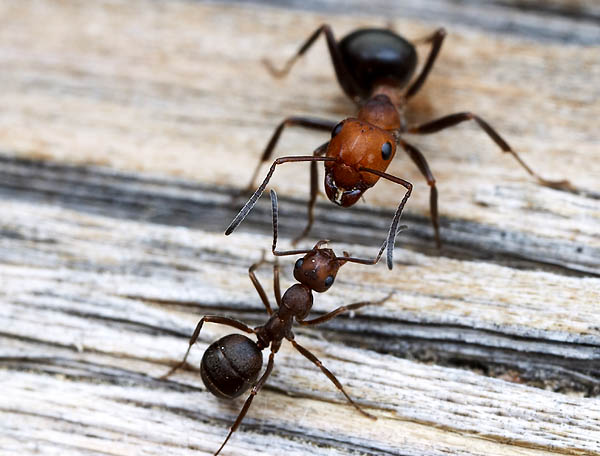
Moisture Ants
Finally, to finish off our list of common types of ants here in Washington and Oregon is the moisture ant. Moisture ants thrive in, you guessed, moisture, so they are big fans of our wet and humid climate. They are about an 1/8th inch long and yellow to dark brown in color. When crushed, they emit a citrus or lemon-like odor (slightly less gross than the odorous ants).
Outdoors you can find them nesting in rotting logs, stumps, soil, and under stones in shaded areas and can create small mounds made of soil. If you see mud tubes, this can indicate a nest. Indoors they’ll seek out damaged wood and moist areas like around pipes, in basements, crawl spaces, and bathrooms. They can cause damage to wood, so make sure to pay attention to wood framing. Winged reproductive ants typically swarm in late summer to early fall (August to September), so if you see these ants flying around, this could indicate a hidden infestation.
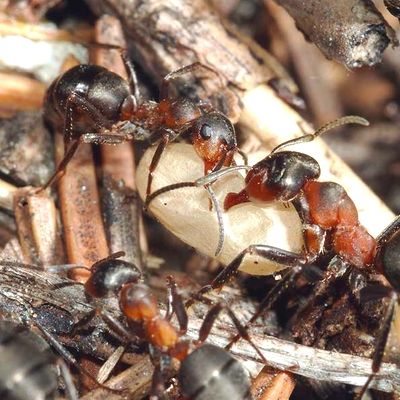
Now you know how to identify some of the most common species of ants here in the Pacific Northwest! Check out our Ant Library page to learn more.
If you’re struggling with ants that keep coming back, you need to address the issue at the source. Call a trusted pest control professional like the pros at Interstate! Learn more about our ant control and extermination services.